The European Commission announced this Wednesday, December 2nd, the nine sites proposed to receive the European Heritage Label, which includes the Sagres Promontory. The award recognizes places for their cultural and historical value to the European Union (EU), as well as the ability of their educational programs to bring Europe closer to its citizens.
Alexandra Gonçalves, regional director of Culture of the Algarve, spoke in statements to Sul Informação his "great rejoicing" for this distinction, which crowns success an application submitted by the entity under its tutelage. "For the first time, there is international recognition of a heritage that everyone knows is of great importance to world history," he stressed.
For the regional director of Culture, «this international notoriety that we have to give to the heritage that is here beside us is very important».
“This inclusion in the list of the European Heritage Label helps us to cherish the hope of bringing it to a successful conclusion. the other application, to World Heritage, despite this being a much more complex process», said Alexandra Gonçalves.
In addition to the Sagres Promontory (Portugal), the list includes the Neanderthal prehistoric site and the Krapina Museum (Croatia), the Premyslid Castle and the Archdiocesan Museum of Olomouc (Czech Republic), the Imperial Palace (Austria), the Historical Site the University of Tartu (Estonia), the Franz Liszt Academy of Music (Hungary), the Mundaneum (Belgium), the World War II Eastern Front Cemetery 123 (Poland) and the European Quarter of Strasbourg (France).
These will join the twenty sites that received the European Heritage Label in the last two years, which include other Portuguese sites: the General Library of the University of Coimbra and the Charter of the Abolition of the Death Penalty, which is preserved in the National Archives from the Torre do Tombo in Lisbon.
This year, they were pre-selected eighteen nominations by participating Member States, having an independent panel created by the European Commission selected the nine sites that were proposed this week. The Commission will formally designate the sites in February 2016 and an awards ceremony will take place in Brussels in April 2016.
This important recognition of Ponta de Sagres is justified by its rich landscape from the historical and cultural point of view located in the southwest corner of the Iberian Peninsula.
It contains significant archaeological remains, urban structures and monuments that attest to its strategic location and its importance over the centuries. Ponta de Sagres became the headquarters of Infante Dom Henrique for his maritime expansion project during the XNUMXth century, a place of greatest importance for the Discovery Period, a period that marked the expansion of culture, science, and European exploration and trade to both the Atlantic and the Mediterranean, paving the way for the affirmation and projection of European civilization, which came to shape the modern world.
Here is the list of new European Heritage Labels:
Ponta de Sagres (Portugal)
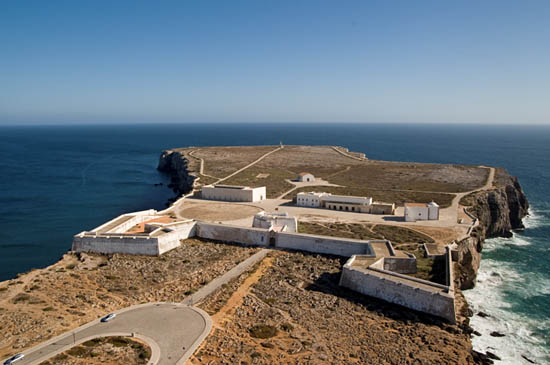 Ponta de Sagres presents a rich landscape from a historical and cultural point of view, located in the southwest corner of the Iberian Peninsula. It contains significant archaeological remains, urban structures and monuments that attest to its strategic location and its importance over the centuries.
Ponta de Sagres presents a rich landscape from a historical and cultural point of view, located in the southwest corner of the Iberian Peninsula. It contains significant archaeological remains, urban structures and monuments that attest to its strategic location and its importance over the centuries.
Ponta de Sagres became the headquarters of Infante Dom Henrique for his project of maritime expansion during the century. XV, a place of greatest importance for the Discovery Period, a period that marked the expansion of European culture, science, exploration and trade to both the Atlantic and the Mediterranean, opening the way for the affirmation and projection of European civilization , which came to modulate the modern world.
Neanderthal site of Krapina (Krapina, Croatia)
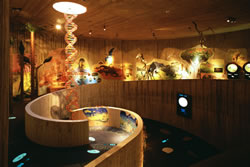 In 1899, the largest number of fossilized bones of Neanderthal man found in Europe to date were discovered at this site, around 125 human remains from around eighty individuals, as well as bones from various animals dating back to 000 BC
In 1899, the largest number of fossilized bones of Neanderthal man found in Europe to date were discovered at this site, around 125 human remains from around eighty individuals, as well as bones from various animals dating back to 000 BC
Experts from around the world carried out studies on the objects found, and their interpretation of Krapina's discoveries influenced different scientific theories about human development, the genesis of our civilization and the way human communities in Europe lived during the Pleistocene period.
Next to the archaeological site, the Krapina Neanderthal Museum of Man today presents, in an interactive way, the origin of life on Earth and the evolution of humanity.
Premyslid Castle and Archdiocesan Museum of Olomouc (Olomouc, Czech Republic)
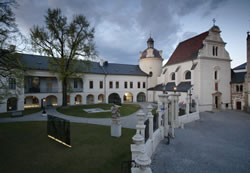 The Archdiocesan Museum is dedicated to the conservation of works of art from the Archdiocese of Olomouc. Its collections are on display in the Chapel of the Dean at Castle Premyslid, a place with thousands of years of history, which preserves everything from the remains of the Bishop's and Prince's palaces to works in the Baroque and Rococo styles.
The Archdiocesan Museum is dedicated to the conservation of works of art from the Archdiocese of Olomouc. Its collections are on display in the Chapel of the Dean at Castle Premyslid, a place with thousands of years of history, which preserves everything from the remains of the Bishop's and Prince's palaces to works in the Baroque and Rococo styles.
Premyslid Castle and the Archdiocesan Museum of Olomouc are a focal point of Moravia's presence in European history. It is a center of early Christianity, a place that preserves and highlights the high level of artistic patronage of the Moravian archbishops, and a good example of the conservation of the region's heritage.
Imperial Palace (Vienna, Austria)
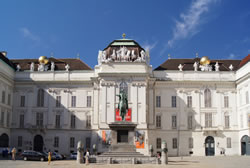 Begun in 1240, the Imperial Palace is a complex of buildings and gardens that served as the residence of the Habsburgs, a family that reigned in large parts of Europe for nearly 700 years.
Begun in 1240, the Imperial Palace is a complex of buildings and gardens that served as the residence of the Habsburgs, a family that reigned in large parts of Europe for nearly 700 years.
The Habsburg Empire was a multi-ethnic and multi-religious empire that had a strong political, administrative, social and economic impact on territories that currently include or are part of Austria, Hungary, the Czech Republic, Poland and Slovenia. the Imperial Palace houses the seat of the Federal President of Austria and five world-renowned museums as well as other cultural institutions.
Historic Site of the University of Tartu (Tartu, Estonia)
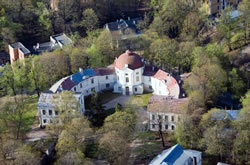 The historic complex of the University of Tartu is a campus conceived in the early XNUMXth century under the motto “a university in the city, a university in the park”. It is a set that embodies the ideas of a university in the Enlightenment, linking science and learning and reflecting the European tradition in education.
The historic complex of the University of Tartu is a campus conceived in the early XNUMXth century under the motto “a university in the city, a university in the park”. It is a set that embodies the ideas of a university in the Enlightenment, linking science and learning and reflecting the European tradition in education.
It was created in 1632 by Swedish King Gustav II Adolphe and although it changed hands between the different political powers in the region, including Sweden, Poland, Germany and Russia, the University of Tartu has always remained a farol of progressive ideas.
Franz Liszt Academy of Music (Budapest, Hungary)
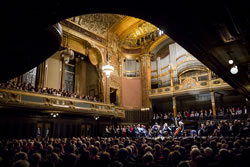 The Franz Liszt Academy of Music was created in 1875 by the composer and outstanding musician himself. It is a multi-faceted institution, in that it is, at the same time, an educational institution, an international university of musical arts and a concert hall.
The Franz Liszt Academy of Music was created in 1875 by the composer and outstanding musician himself. It is a multi-faceted institution, in that it is, at the same time, an educational institution, an international university of musical arts and a concert hall.
The Academy highlights its musical heritage while maintaining a true spirit of openness, creativity and innovation and its European and international character.
The Academy is housed in a 1907 building designed by Flóris Korb and Kálman Giergl and is considered a masterpiece of the Hungarian secession. It includes, in particular, the Franz Liszt Memorial Museum and Research Center, the Kodály Institute and the Kodály Museum.
Mundaneum (Mons, Belgium)
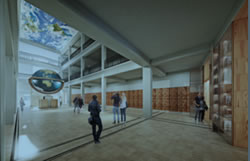 The Mundaneum is an important milestone in the intellectual and social fabric of Europe. Its founders, Henri La Fontaine and Paul Otlet, were advocates of peace through dialogue and knowledge sharing at European and international level thanks to bibliographical information.
The Mundaneum is an important milestone in the intellectual and social fabric of Europe. Its founders, Henri La Fontaine and Paul Otlet, were advocates of peace through dialogue and knowledge sharing at European and international level thanks to bibliographical information.
The Mundaneum aimed to collect all the information available in the world, regardless of its support (books, newspapers, postcards, etc.), and classify them according to a system developed by them, the Universal Decimal Classification.
The Mundaneum forms the basis of today's information science and is currently considered to be the forerunner of Internet search engines.
World War I Eastern Front Cemetery 123 (Łużna – Pustki, Poland)
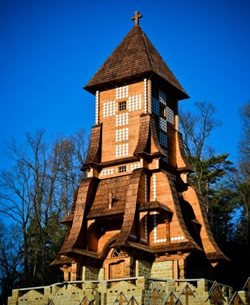 War Cemetery No. 123, created in 1918 on Pustki Hill, is the scene of one of the biggest battles of World War I on the eastern front between the Austro-Hungarian and German armies and the Russian army: the Battle of Gorlice, also called to Verdun from the East.
War Cemetery No. 123, created in 1918 on Pustki Hill, is the scene of one of the biggest battles of World War I on the eastern front between the Austro-Hungarian and German armies and the Russian army: the Battle of Gorlice, also called to Verdun from the East.
The cemetery is the last resting place for soldiers from these three armed forces, coming from territories that are currently part of Austria, Hungary, Germany, Poland, Ukraine, Russia and Slovenia, and with different religious and linguistic origins. .
Cemetery No. 123 of the Eastern Front of World War I is a place of memory that enshrines the idea of ecumenism, as it treats all fallen in combat in the same way, regardless of their military, ethnic or religious affiliation.
Strasbourg European Quarter (Strasbourg, France)
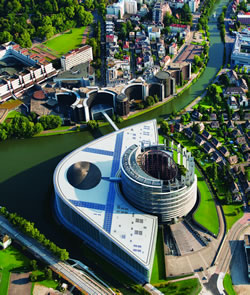 Since its creation, after World War II, the European Quarter of Strasbourg has been the seat of the Council of Europe, its European Court of Human Rights and the European Parliament of the European Union. It bears witness to European integration, the defense of human rights, democracy and the rule of law.
Since its creation, after World War II, the European Quarter of Strasbourg has been the seat of the Council of Europe, its European Court of Human Rights and the European Parliament of the European Union. It bears witness to European integration, the defense of human rights, democracy and the rule of law.
The full text of the report of the independent selection panel in charge of evaluating the nominations based on the established criteria is available by clicking here.
More information about how to apply here.
The 20 sites already on the list:
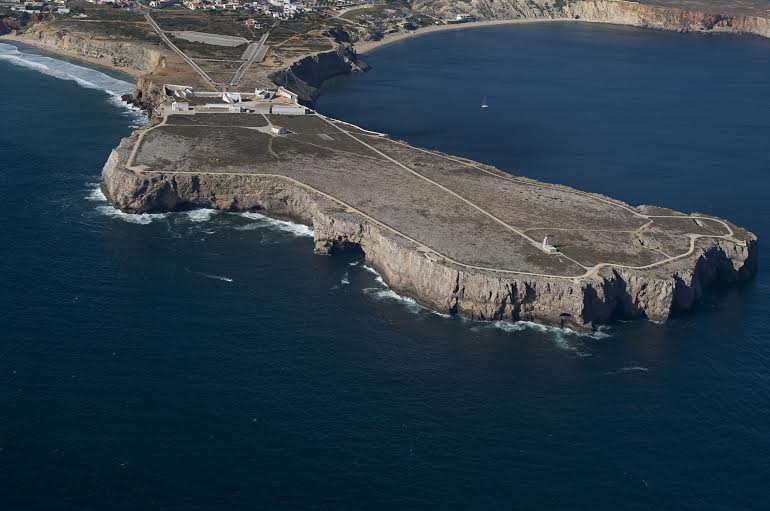


















Comments